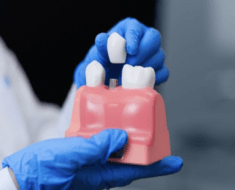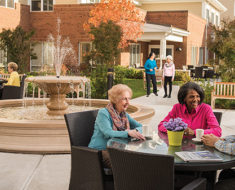
Pexels
Cooperation and camaraderie are crucial to human beings, necessitating the development and maintenance of communities. Whether it’s academic or work settings, humans prefer to work in groups, striving collectively to achieve common goals. Interdependency lies at the core of a prosperous community.
Without the synergy of combined efforts and commitments, achieving tangible and intangible goals would become difficult. On top of that, living in a community composed of supportive individuals reaps long-term health benefits, such as lower depression rates. Let’s further understand the benefits of living in a healthy community:
The Influence of Community Health on Personal Well-Being
Every individual, knowingly or unknowingly, is deeply influenced by their environment. A prosperous community is pivotal in shaping individual health outcomes and the broader societal framework. When we think about community health, we often imagine the immediate factors like cleanliness, availability of healthcare services, and safe spaces. But it goes beyond the obvious. Community health lays the groundwork for societal well-being, ensuring every member thrives and contributes productively.
A crucial element in the community health structure is disseminating relevant knowledge and awareness. Here’s where the role of a community health educator becomes indispensable. They bridge the knowledge gaps, ensuring every community member is informed, aware, and empowered. By doing so, they uplift the overall health standards of the community, making it more resilient against health challenges.
The most crucial role of a community health educator is to devise policies to highlight the needs of specific groups, taking into account the social, economic, and cultural factors affecting the community members’ well-being.
Improved Mental Health
Imagine living in a supportive community that genuinely understands the value of mental well-being and emotional balance. As stated previously, living in a healthy and supportive community lessens depression rates among the members. As social beings, humans thrive on community support and connections.
Another noteworthy point is the role of online platforms in supporting mental well-being in our tech-driven world. Individuals battling specific issues in life can connect online with others battling the same challenges. This way, they can share their experiences and coping mechanisms.
Better Physical Health
Living in a healthy community directly impacts our physical well-being. One of the main reasons is easy access to healthcare facilities. When hospitals and clinics are nearby, regular medical check-ups become part of our routine, enabling us to detect potential health issues early. Moreover, being close to wellness centers makes us more likely to engage in activities that keep us fit, like yoga or aerobics. It acts as a constant motivation when the means to stay healthy are just a few steps away.
Additionally, with more and more communities emphasizing the importance of nutrition, it’s not uncommon to find outlets offering wholesome food choices. Instead of grabbing a fast-food meal, residents can choose fresh, nutritious dishes. This availability ensures mindful eating and healthy dietary practices. In essence, a healthy community simplifies our journey toward better physical health.
Cleaner Environment
Residing in an environment that prioritizes cleanliness and greenery inevitably translates into improved health outcomes. Factors like air quality directly influence our respiratory health. Green spaces provide visual relief and areas for physical activities, which are essential for mental and physical health.
Sadly, as urban spaces get more crowded, pollution levels are rising. However, living in a community that actively combats this issue makes all the difference.
- Clean air reduces the risks of respiratory ailments.
- Green spaces encourage physical activity, like yoga, reducing obesity rates.
- A cleaner environment fosters community interaction.
- Proactive waste management ensures minimized disease outbreaks.
More Holistic Educational Opportunities
A thriving educational community offers diverse learning avenues and resources. Being part of such a community means exposure to various educational programs, workshops, and interactive sessions, all contributing to holistic growth.
Also, community-driven programs are crucial since they raise awareness of community issues and challenges. Such initiatives address scholarly needs and emphasize personal development, essential life tools, and an understanding of culture, enriching the entire learning journey.
Bridging Digital and Physical Communities
The pandemic prompted a swift pivot to the digital realm, emphasizing the value and potential of online communities. These digital platforms became a refuge for many, incredibly when physical interactions were restricted. The rise of digital communities during the COVID-19 pandemic showcased the power of technology in bringing people together, regardless of geographical barriers.
Digital platforms offer unique advantages – inclusive, accessible, and flexible interactions. For those unable to participate in physical communities for specific reasons, online platforms provide an alternative, ensuring they get a sense of belonging. While biological communities are irreplaceable, digital platforms have carved out their unique space, making connections and interactions seamless, even in challenging times.
Economic and Socio-cultural Benefits
Lastly, living in a healthy community does more than bolster physical and mental well-being; it lays the groundwork for economic prosperity and socio-cultural enrichment. Communities that emphasize health and well-being naturally attract businesses, creating more job opportunities and stimulating local economies. This economic growth often parallels enhanced social engagements, offering residents many options to connect, share, and grow.
The socio-cultural fabric of a community defines its economic trajectory. A healthy community tends to be more inclusive, accepting, and appreciative of diverse cultures. This cultural integration educates residents and promotes a sense of unity and mutual respect. It ultimately results in increased employment opportunities due to businesses flocking to such communities. Likewise, a thriving community can become a hub for tourism and trade.
Conclusion
Humans cannot live in isolation since they thrive on connections and interdependence. Choosing to be part of a healthy community is a decision that reverberates across all facets of one’s life. From physical health to economic prosperity, the benefits are manifold. However, every community member is mandated to play an essential role in maintaining it. Proactive involvement in community initiatives and programs is crucial to reaping these benefits fully. As we tread into the future, community health will undeniably play a pivotal role in bridging socio-economic and cultural divides, ensuring everyone enjoys holistic health and well-being.









































